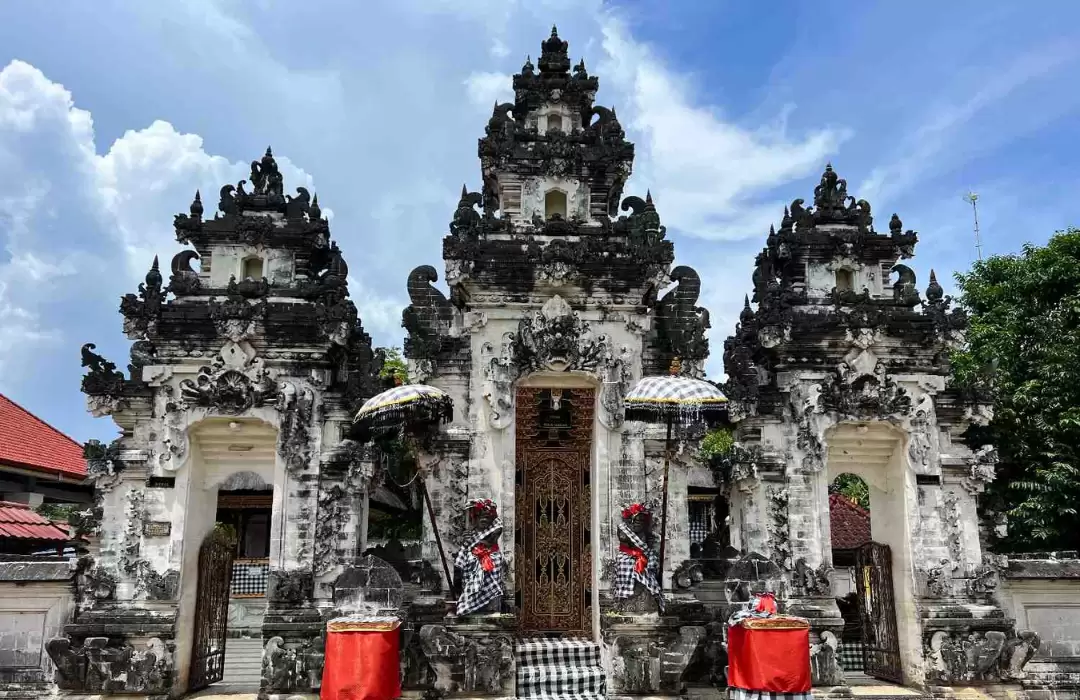The Ultimate Guide to Nusa Penida Temples and Sacred Sites

Nusa Penida, a magical island off the southeastern coast of Bali, is not only known for its dramatic cliffs, crystal-clear waters, and stunning beaches, but also for its rich cultural heritage. The island is home to several sacred sites and temples that are integral to the spiritual and cultural life of its residents. These temples are not just places of worship but are also a connection between the island's past, present, and future. Nusa Penida’s temples offer a unique glimpse into the deep-rooted spiritual practices of the Balinese people, where the natural environment and religious beliefs are intertwined.
In this ultimate guide, we will explore some of the most important and iconic temples and sacred sites in Nusa Penida, uncovering their history, significance, and the best ways to experience them. Whether you’re a spiritual seeker, history buff, or cultural enthusiast, these sacred sites offer a profound and immersive experience.
1. Pura Penataran Ped: The Spiritual Heart of Nusa Penida

Located in the northeastern part of Nusa Penida, Pura Penataran Ped is one of the most important temples on the island. This temple is dedicated to Sang Hyang Widhi Wasa, the Supreme God in Balinese Hinduism, and is a sacred site for the local community. The temple plays a significant role in the island’s spiritual life, with regular ceremonies held to honor the deities and maintain harmony between the natural and spiritual realms.
Historical and Spiritual Significance:
Pura Penataran Ped is believed to be the site of the spiritual energy of the island. Local villagers come here to pray and seek blessings for health, prosperity, and protection from evil forces. The temple is not only an important place for religious ceremonies but also serves as a cultural center where traditional rituals and dances are performed.
What to See:
The temple is beautifully situated among lush greenery, with large stone statues and intricate carvings that depict scenes from Hindu mythology. Visitors can explore the temple grounds, offering prayers and admiring the traditional Balinese architecture.
Best Time to Visit:
If you’re lucky, you may witness one of the major ceremonies or festivals held at the temple, such as the Galungan and Kuningan festivals, which are deeply significant in Balinese culture.
2. Pura Dalem Penida: A Sacred Temple of Death and Ancestors

Located near Sampalan Village, Pura Dalem Penida is dedicated to Lord Shiva and is considered the temple of death and the ancestors. Balinese Hindus believe that the temple serves as a spiritual connection between the living and the deceased, providing a space for honoring ancestors and praying for peace and balance in the afterlife.
Historical and Spiritual Significance:
The temple is part of the larger spiritual system that connects humans to the divine through offerings, rituals, and prayers. The temple is unique because it is directly associated with the afterlife, with the locals offering prayers to their ancestors in hopes of gaining blessings and guidance.
What to See:
The temple complex includes beautiful statues and carvings depicting various aspects of life and death, along with peaceful courtyards. Visitors can observe local religious practices, with the temple grounds often bustling with activity during religious festivals.
Best Time to Visit:
The temple is most active during the Balinese Hindu festivals, such as Galungan and Kuningan, when locals come to make offerings and participate in prayers. It is a place to experience the depth of Balinese spirituality and connect with the island’s ancient traditions.
3. Pura Goa Giri Putri: The Cave Temple of Nusa Penida

One of the most unique and sacred sites on the island is Pura Goa Giri Putri, a temple located inside a cave on a hilltop in the Karangsari area. This temple is dedicated to Giri Putri, the goddess of the mountain, and it is believed to have been established by Rsi Markandeya, an ancient Hindu sage.
Historical and Spiritual Significance:
Pura Goa Giri Putri is a place of immense spiritual importance for locals and is one of the most sacred temples on Nusa Penida. It is believed that the cave temple provides a direct connection between the earthly world and the divine. Pilgrims visit the temple to seek purification, blessings, and spiritual strength. It is also a place of meditation and retreat for those seeking spiritual enlightenment.
What to See:
The entrance to the cave is narrow, and visitors must crawl through a small opening to enter the temple. Inside, the cave is illuminated with soft lighting, and the temple itself is serene and tranquil. The walls of the cave are adorned with various shrines and offerings, and the spiritual atmosphere is deeply felt.
Best Time to Visit:
Pura Goa Giri Putri is less crowded than other temples, making it a peaceful and contemplative experience. However, it is important to check the schedule of religious ceremonies as the temple can be busier during major spiritual events.
4. Pura Segara Kidul: A Sacred Sea Temple

Pura Segara Kidul is a sea temple located on the southern coast of Nusa Penida, overlooking the Indian Ocean. This temple is dedicated to Ida Sang Hyang Widhi Wasa, the god of the sea, and plays an important role in Bali’s maritime traditions. The temple serves as a spiritual guardian of the seas, providing protection to fishermen and sailors.
Historical and Spiritual Significance:
Pura Segara Kidul is believed to provide blessings for safe travel across the seas and protection from dangerous tides and storms. The temple is an integral part of the island’s coastal life, where locals come to pray before embarking on fishing expeditions or voyaging across the waters.
What to See:
The temple’s location on a cliff provides panoramic views of the ocean. The temple itself is simple yet stunning, with offerings and incense frequently adorning the altar. It is a peaceful place to reflect on the island’s strong connection to the sea and its spiritual significance.
Best Time to Visit:
The temple is often visited early in the morning or late afternoon when the sun is setting, providing a serene atmosphere and breathtaking views of the ocean.
5. Pura Batu Medawu: The Temple on the Rock

Pura Batu Medawu is another iconic temple on Nusa Penida, located on a large rock formation along the island’s rugged coastline. The temple is dedicated to Lord Shiva and serves as a place for purification and spiritual growth. It is known for its striking location, perched on a rock overlooking the sea.
Historical and Spiritual Significance:
Pura Batu Medawu is a smaller temple but holds deep cultural significance as it is believed to be the meeting point of spiritual forces, aligning the island with the heavens and the sea. The temple serves as a place for offerings, prayers, and meditation, especially for those seeking clarity and guidance.
What to See:
The temple is built on a rock, with stairs leading up to the sacred site. The view from the temple offers a breathtaking vista of the coastline, and visitors can enjoy the tranquil surroundings while observing the natural beauty of the area.
Best Time to Visit:
The temple is a peaceful spot, best visited early in the morning or late in the afternoon to avoid crowds and experience the serenity of the area.
Nusa Penida is a place of profound spiritual significance, and its temples and sacred sites are a testament to the island’s deep cultural and religious traditions. Each temple offers a unique experience, whether you’re seeking spiritual guidance, learning about local customs, or simply immersing yourself in the beauty of Bali’s sacred landscapes.
From the grandeur of Pura Penataran Ped to the mystical cave temple of Pura Goa Giri Putri, the sacred sites of Nusa Penida offer travelers the chance to connect with Bali’s spiritual roots and explore the island’s rich cultural heritage. Whether you’re visiting for spiritual purposes or simply to experience the island’s profound beauty, the temples of Nusa Penida are a must-see for anyone traveling to this enchanting destination.











